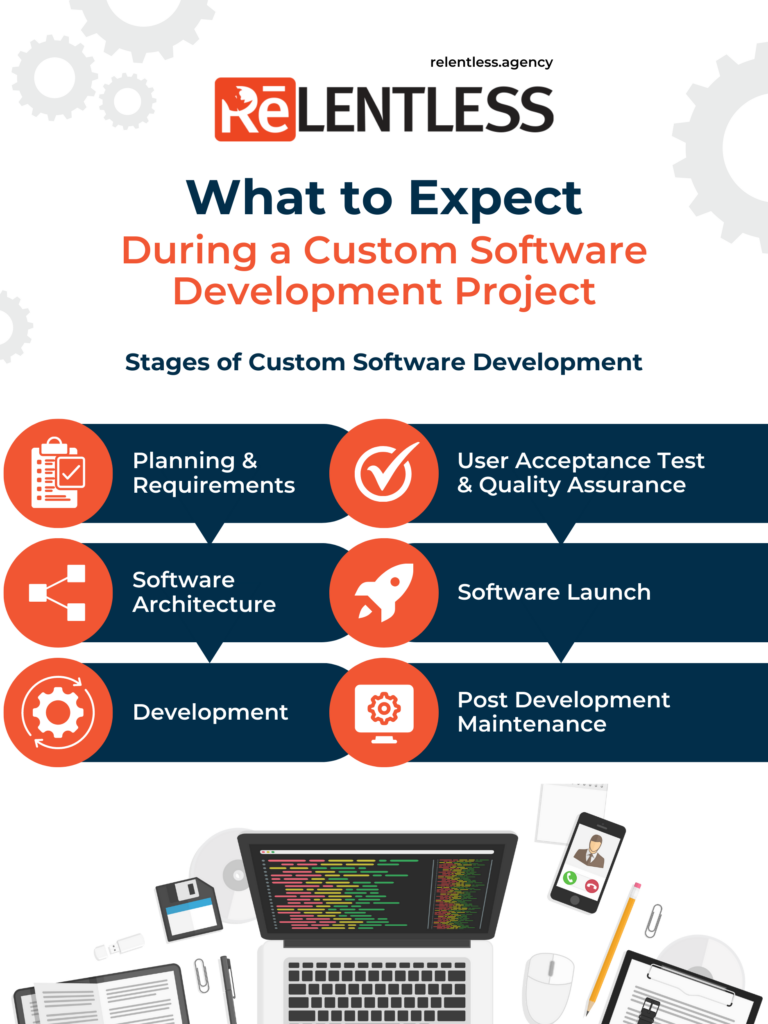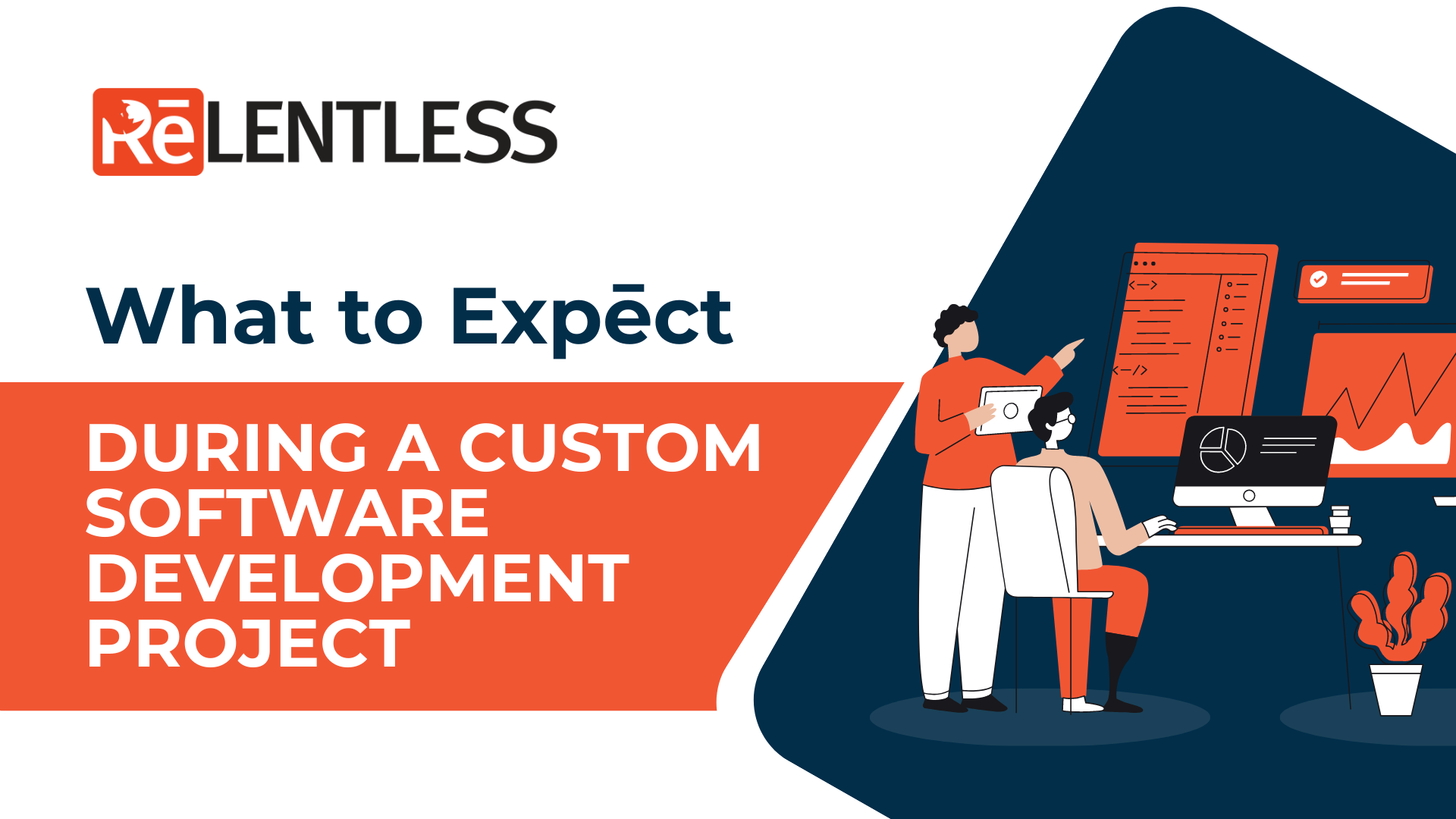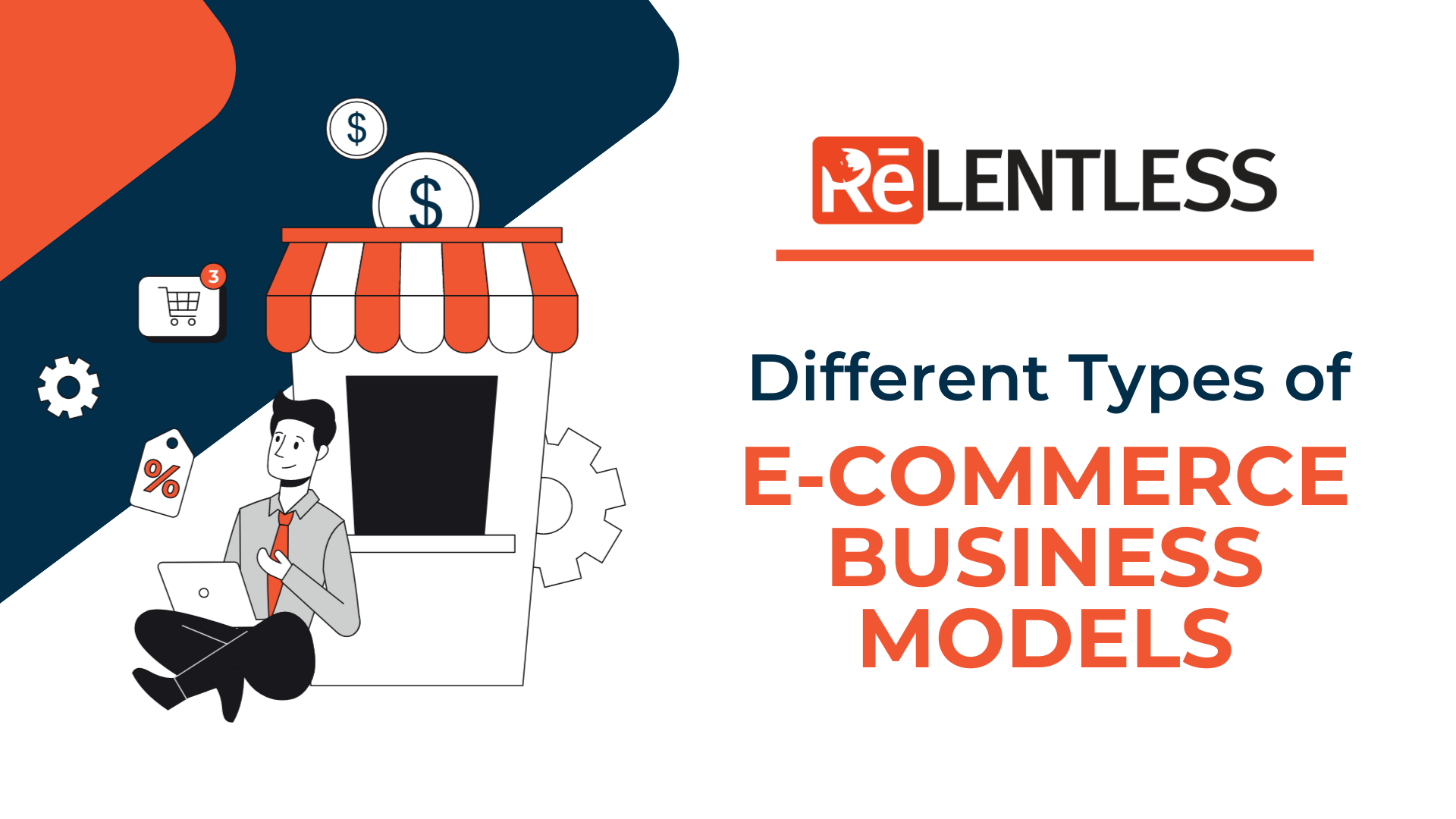In today’s era, the business landscape is competitive. Entrepreneurs across diverse industries worldwide leverage technology to gain a competitive edge over their rivals. However, some entrepreneurs struggle and fail to adapt due to inadequate planning and lack of information.
You can gain a competitive advantage using technology through various methods. The most popular is through customized software. This approach can help organizations automate their unique business processes, which leads to improved productivity.
Custom software development also enhances your customer’s user experience by tailoring the software to meet their needs and preferences.

Stages of Custom Software Development
You might already have plans to get customized software for your business and recognize its significance. To help you with your research, let’s review what you should anticipate during custom software development.
Planning & Requirements
All successful software starts with a plan. Before anything gets done, it’s crucial to define your project requirements. This step ensures that everyone involved fully understands your goal and what you want your users to experience. Planning usually includes a roadmap that clearly defines each milestone, potential challenges or limitations, and how to address them.

Software Architecture
Once the plans are in place, the next step is creating the software architecture. Architecture refers to the structural design of your software. It includes steps on how to transfer data from point A to point B, and how users would feel throughout the process. Some software can be simple and underwhelming, but some have a complex architecture that spreads like a spiderweb.
The best way to draft the software architecture is to make each process as simple and understandable as possible. It also effectively decreases the chances for bugs to occur during development.
Development
This phase is where the actual coding and software development work takes place. Depending on the complexity of your software architecture, it can take weeks or even months before you can move on to the user acceptance test.
During software development, communicating with your development team is a top priority. It ensures that everything is on track. Any issues that arise should be addressed on time and progress should be updated regularly for transparency.
User Acceptance Test & Quality Assurance
When the development work is complete, the quality assurance phase begins. It is where your team will test every angle of your application or website to ensure that all the required functions are met.
If the software is for your consumers, you can also implement the “Beta Testing” phase for your most loyal customers. It effectively informs them that they are valued and that they have a voice in your company. It hits two birds with one stone, improves brand loyalty, and gains input from people who matter the most.
Software Launch
After many rounds of quality assurance tests, it’s finally time to launch your software application or website. This involves transferring the raw code from a test environment to a live environment where users can access it.
Depending on the complexity of your custom software, it may involve additional configurations to get it running. Once everything is in place, your development team needs to monitor your software application or website to ensure everything is working smoothly.
Post-Development Maintenance
Once your software application is live, keeping it up-to-date is necessary. Maintenance is a crucial part of owning a software application or a website. It involves fixing identified bugs, updating the technology to current trends, and adding new features whenever needed.
Everything done in post-development maintenance is crucial to ensure that your software continues to delight your users with software that promotes efficiency.
Popular Types of Custom Software
Now that you know what to expect during a custom software development project, you’re probably wondering about the types of software best suited for customization. Keep reading – your target software might be on this list.

E-Commerce
Custom E-commerce is an online store designed and built to meet the specific needs of a business. Unlike off-the-shelf e-commerce software that offers pre-built templates, custom e-commerce is created from scratch. Customization allows entrepreneurs to tailor their online store with their unique ideas.
Customized e-commerce can also be integrated with different third-party technologies already available in your company. Examples include payment gateways, inventory management, booking, delivery systems, and more.
Customizing your e-commerce allows for a better user experience and a streamlined sales process, which increases efficiency and revenue.
Web Applications
Web applications can be 100% unique to your business. As long as the software is accessible via the internet, it will be considered a web app.
One popular web application commonly used by many is CRM, or Customer Relationship Management software. This software is in charge of keeping track of your customers. Past, present, and future interactions between you and your customers are logged here. This software improves business relationships and grows your company.
A custom CRM is important if you have a unique way to engage your customers that you couldn’t find on off-the-shelf CRM software. It is also necessary if you want to connect your CRM to software that is already available and unique to your company.
Enterprise Applications
An enterprise application should be very secure and reliable. It often holds valuable data that can make or break your business. A great example is SCM, or Supplier Chain Management software, which is essential to optimizing the supply chain process to save resources and improve customer satisfaction.
Enterprise applications such as SCMs can be customized for specific business needs. Developers can add more functionality by improving how reports are delivered, and make sure that each software feature has a corresponding benefit to the organization.
Mobile Applications
86% of the world’s population owns a smartphone, which means your market is over 6.9 billion people globally. Smartphones have already become the standard for communicating with people. With landlines slowly phasing out, the need for mobile applications has increased dramatically.
One of the main benefits of having a smartphone is its capability to access the internet anytime and anywhere. Companies have adapted to this change by making all their services accessible through customized mobile applications.
SaaS Applications
This cloud computing application is usually hosted on a remote server and managed by a SaaS provider. Examples of such software are the following:
- Human Resource Software
- Accounting Software
- Productivity Software
- Project Management Softwares
Buying off-the-shelf SaaS can be expensive (long-term) as you need to subscribe to their services indefinitely. Some companies opt to create their own customized SaaS software and enjoy the benefits of not paying a monthly recurring fee.
Choosing between off-the-shelf and customized software for your business can be a tough decision. Check this article to determine if it’s the best choice for your business.
If you need customized software, Relentless can provide the full suite of software development. Contact us for a free consultation.






